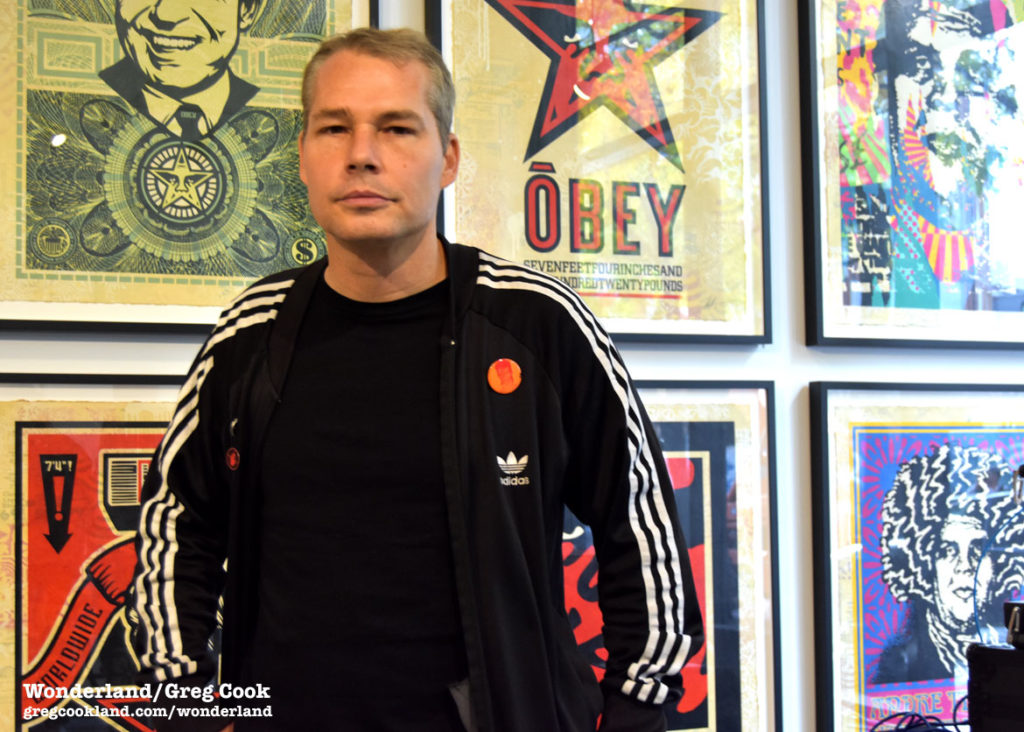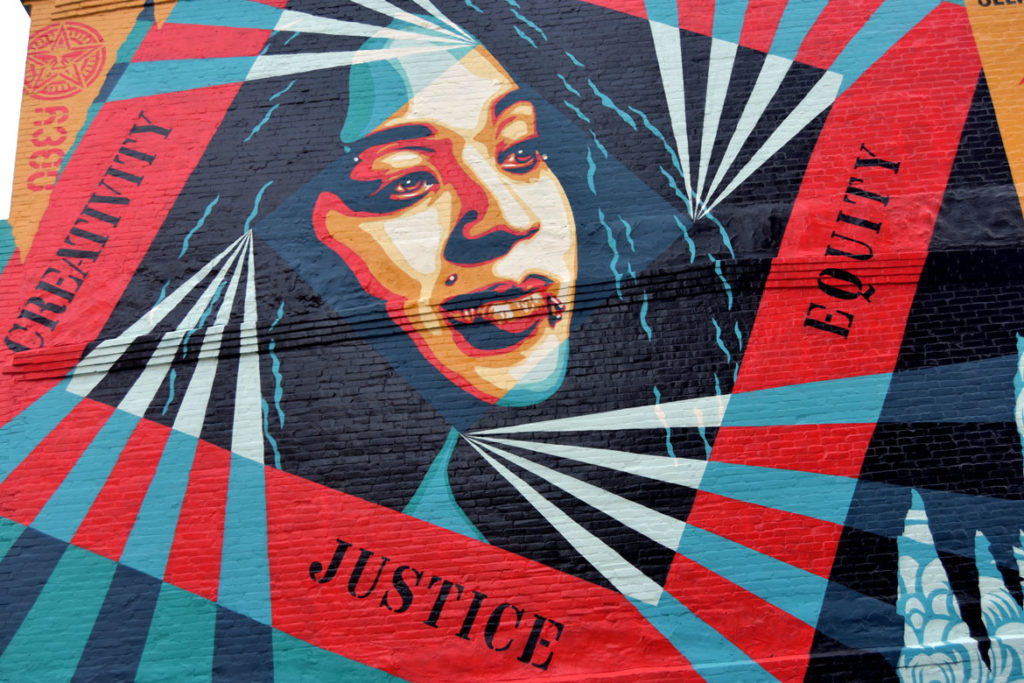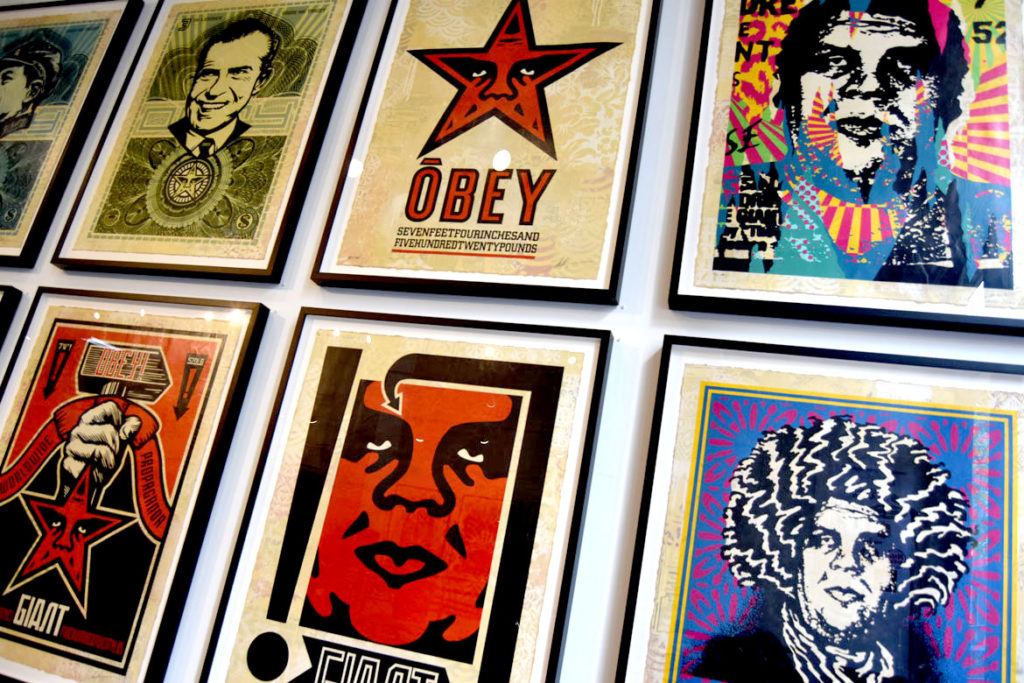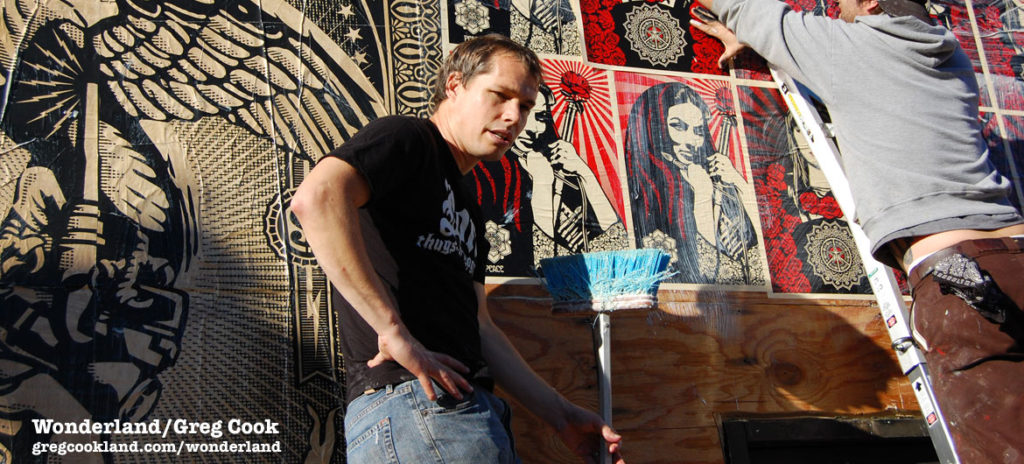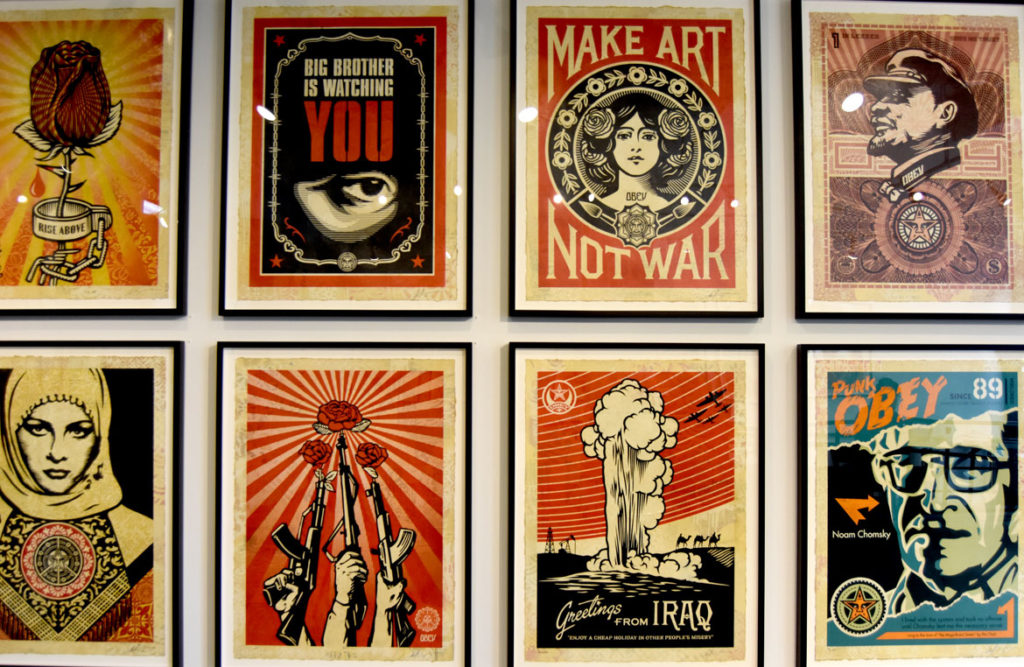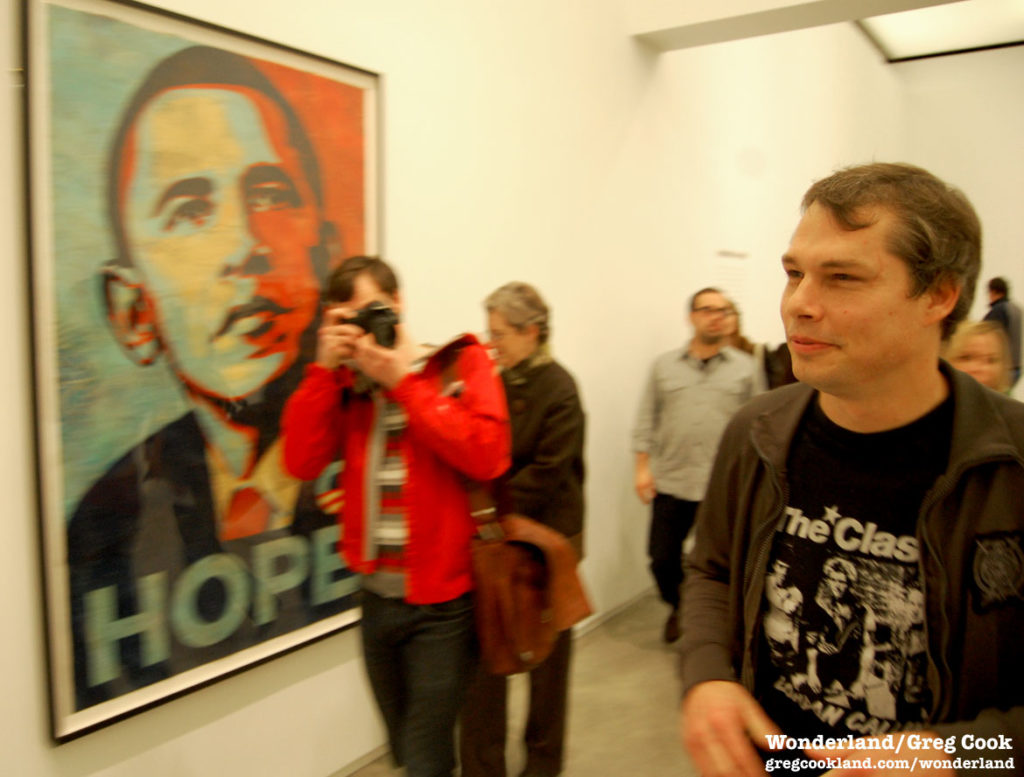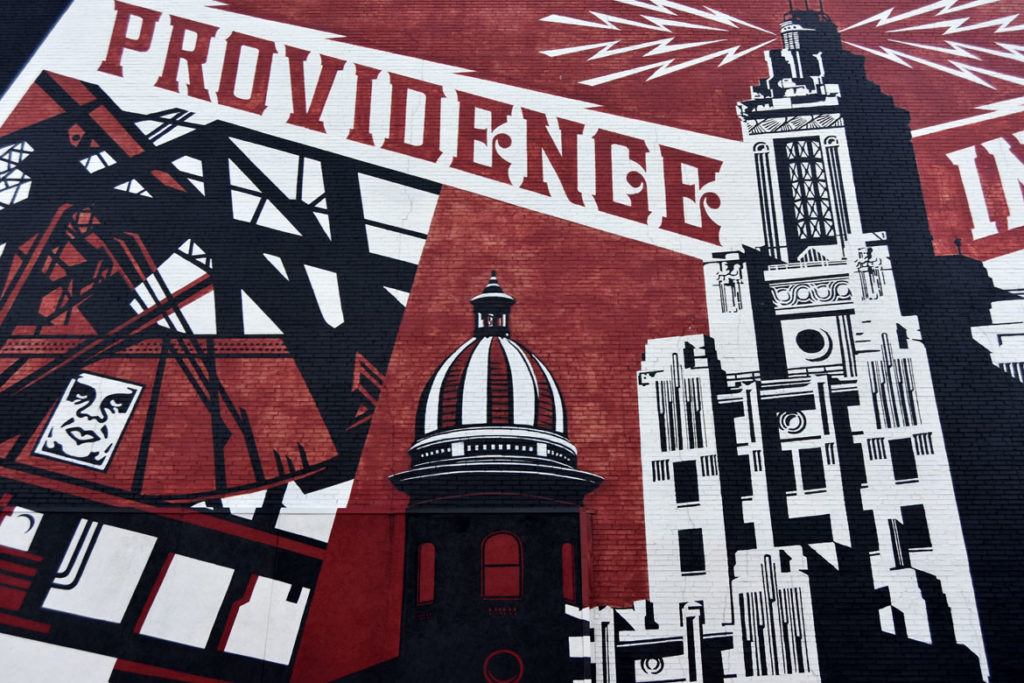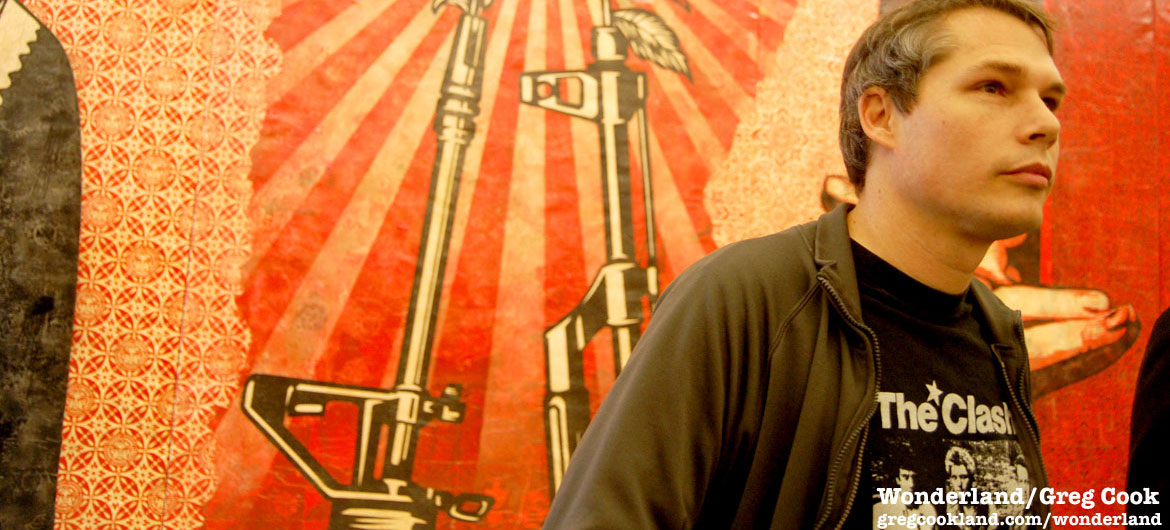Shepard Fairey—one of the most famous street artists in the world, known for his “Obey” Andre the Giant graphics to his Obama “Hope” posters—has been in Providence this week to paint a mural on the Founder’s League building at 91 Clemence St. to celebrate the work of the city’s landmark arts center AS220.
“This is my 100th mural,” Fairey tells me. “It was important that I did this mural in Providence. This is where I started.”
Along with the mural, AS220 is hosting a pop-up gallery exhibiting Fairey’s “Facing the Giant: Three Decades of Dissent,” which showcases 30 new screenprints and collages that survey his motifs from the past 30 years. It’s on view at 233 Westminster St., Providence, from Oct. 25 to Nov. 16, 2019, open Tuesday to Saturday, noon to 6 p.m. Sales of the exhibition artworks as well as a $50 limited print of the mural will support AS220’s $5 million All Access Campaign to renovate and upgrade its flagship Empire Street complex. (More than $4 million has been raised in the campaign so far.)
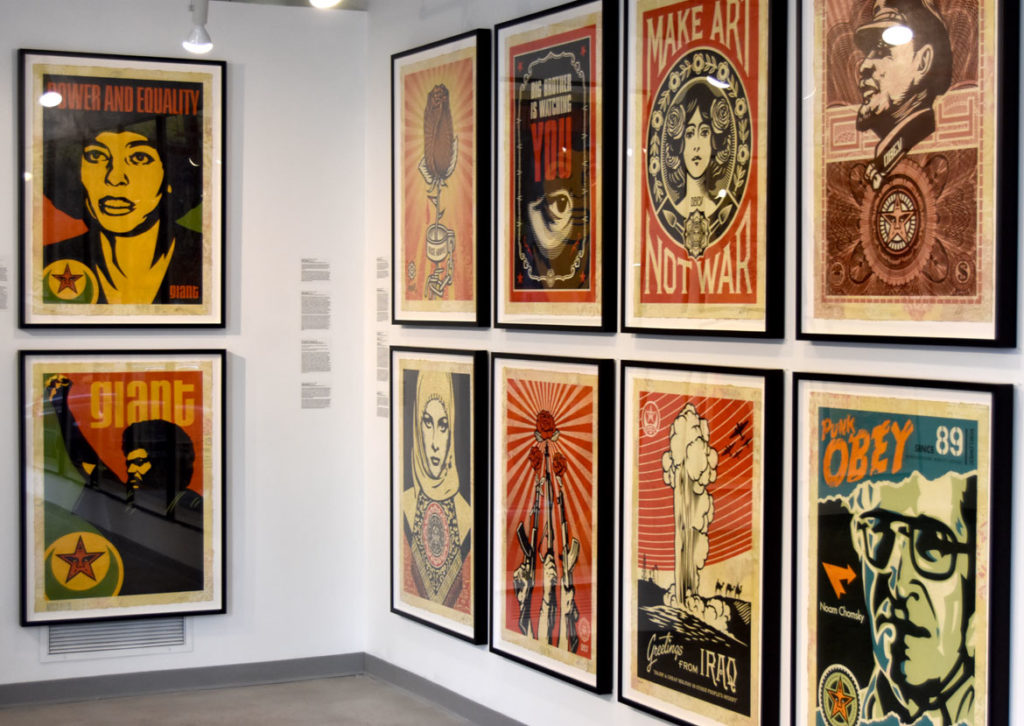
The 49-year-old Los Angeles artist first gained notice as a student at Rhode Island School of Design in 1989 when he began (illegally) plastering Providence—and then the world—with stickers featuring the wrestler (and actor in the 1987 film “The Princess Bride”) Andre the Giant. Later versions were addended with the word “Obey.” Together they became Fairey’s trademark.
“I realized that getting people to question all the imagery they’re inundated with daily was something that was actually somewhat important to, I think, the way people communicate, and the way people can either question the use of public space or just passively submit,” Fairey told me in 2008. “So then that’s why the idea of making an image that confronted people with the idea of obedience.”
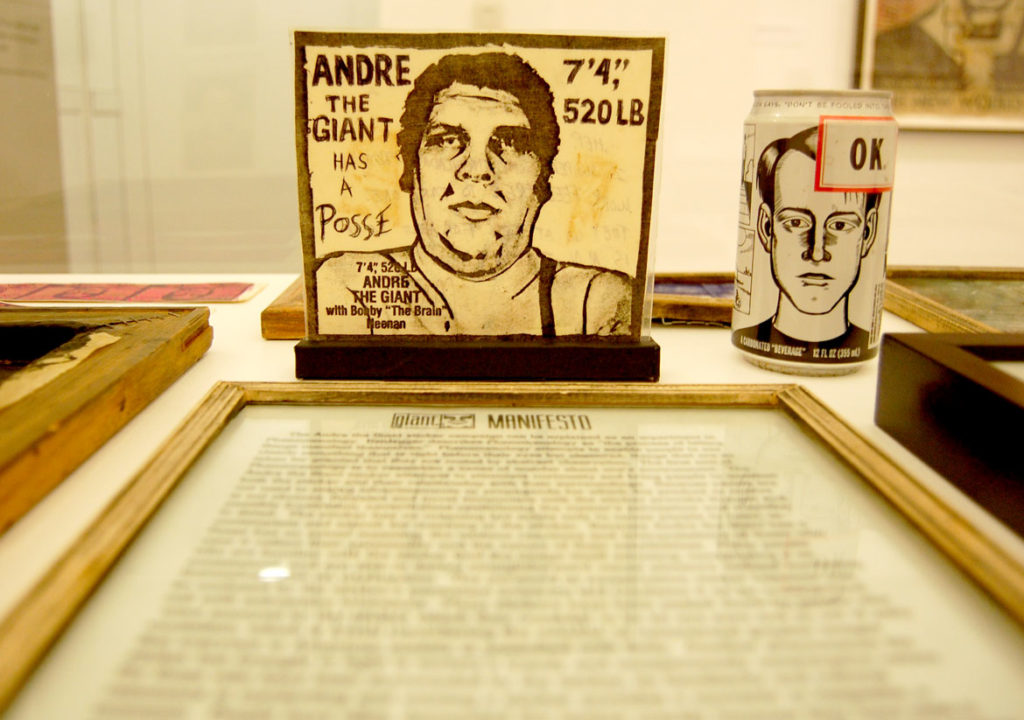

The art in “Facing the Giant” goes on to celebrate civil rights activists Angela Davis and Jesse Jackson, as well as Arab women after the anti-Islamic hysteria after the Sept. 11 attacks in 2001. Prints critique capitalist greed, police violence, and wars (“Greetings from Iraq: Enjoy a cheap holiday in other people’s misery”). One artwork warns: “Big brother is watching you.” Fairey satires American campaign fundraising: “Legal bribery: It’s not a dream! It’s the American system! End corruption. Restore democracy.” Prints from the past decade warn of an “Earth Crisis” due to global warming and oil spills.
In a video shown before a talk at RISD on Oct. 21, Fairey said he’s “looking at the problems of abuse of authority, of loss of privacy, of unnecessary wars, of environmental destruction, of all sorts of biases—race, gender, sexual orientation, country of origin, religion. … I’m pushing against injustice.”
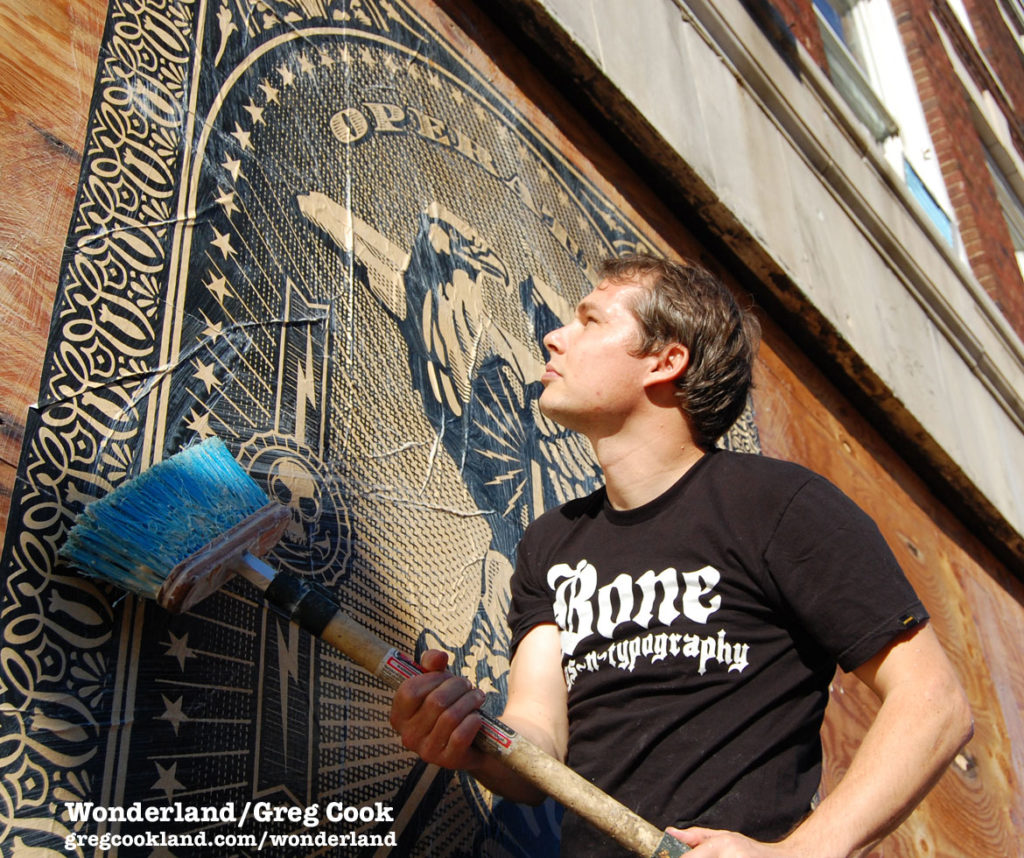
Fairey’s strikingly bold graphics ape styles and colors (red, black, white) of Soviet and Maoist propaganda, pop Che Guevara graphics, rock concert posters (‘60s psychedelia, the Misfits skull), American money, and decorative Islamic-style patterns.
“The beauty of art is that it can be both pleasing and provocative simultaneously,” Fairey told me in 2008. “So I always try to find a balance there, because I think people are more receptive to ideas if they on a gut level are moved by them. And you can move people with things that are very, very powerful and provocative, and you can move people with things that are beautiful, that soothe them in a way but then have something embedded in them that is maybe a message.”
During his talk at RISD on Oct. 21, Fairey recalled being radicalized by Providence police roughly breaking up a party in the city’s old train tunnels by “pepper-gassing the entire party.” Fairey said, “That was when I witnessed it firsthand: unchecked authority abusing their power.”
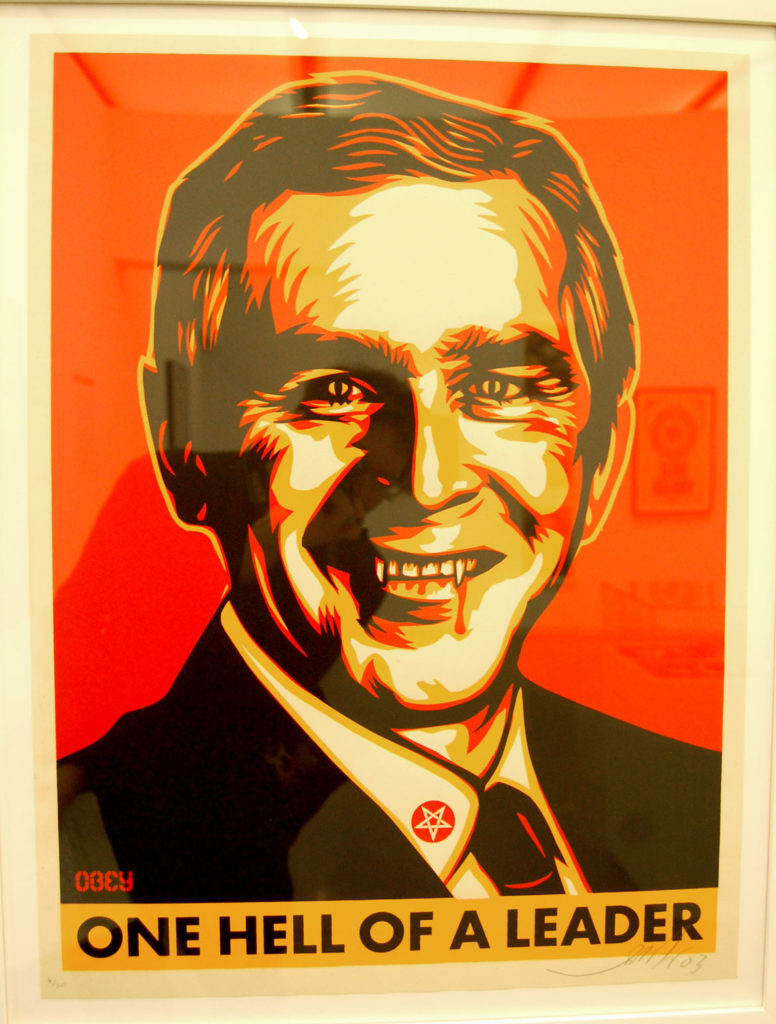
In the first decade of the 2000s, Fairey’s art grew increasingly political to criticize the presidency of George W. Bush and the administration’s misbegotten and failed wars in Iraq and Afghanistan. “I think a lot of people were censoring themselves because Bush said you’re with us or you’re with the terrorists,” Fairey tells me. “…There was an elimination of nuance and there was an elimination of dissent.”
Then in the spring of 2008, Fairey created his historic red, white and blue Barack Obama “Hope” poster. “For the first time, other than just protesting things,” Fairey says, “I saw an opportunity to support a mainstream candidate who, at least as a campaigner, seemed to be the opposite of Bush.” Fairey saw Obama as a uniter, in favor of health care and protecting the environment. “There were a lot of problems I had with Obama’s policies as president … but he was at least someone who had the right values, at least compared to where we are now.”

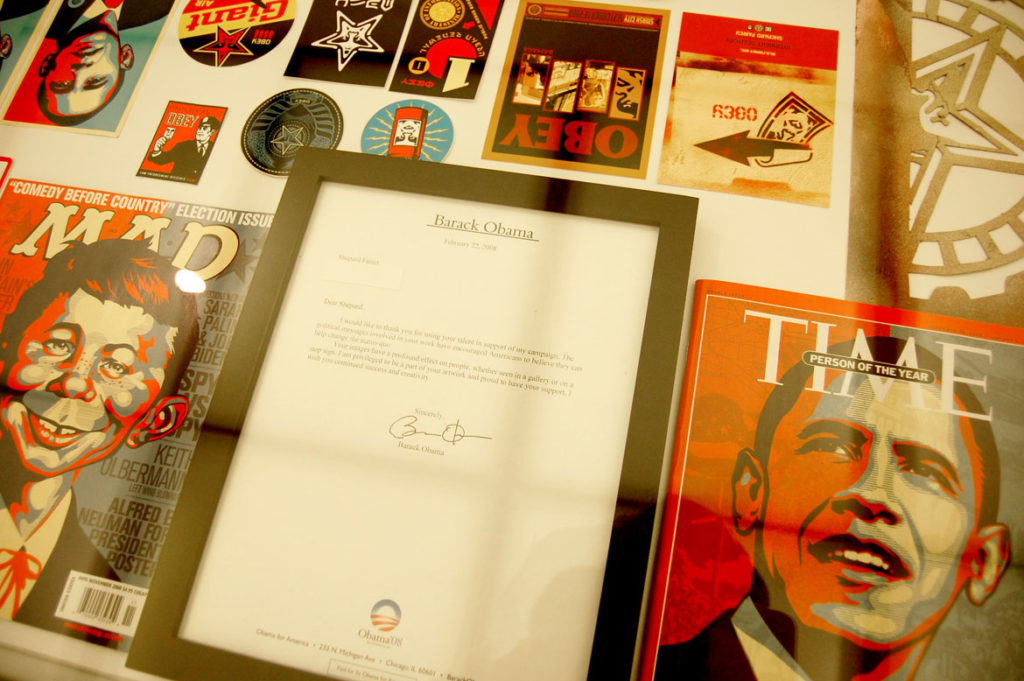
The Obama poster marked a turning point in Fairey’s career. Establishment institutions more fully embraced him. This led to “Supply and Demand,” his first solo museum survey at Boston’s Institute of Contemporary Art in 2009. Though Boston police still arrested him that February as he was about to enter the exhibition’s sold-out launch party and charged him with vandalism for illicitly pasting up posters and stickers around Boston.
“Fortunately, I am in a place in my career where I can get sanctioned places,” Fairey said in July 2009 when he pleaded guilty. “So, it’s not an issue I will ever have to worry about again. . . . There should be more public outlets for art.”
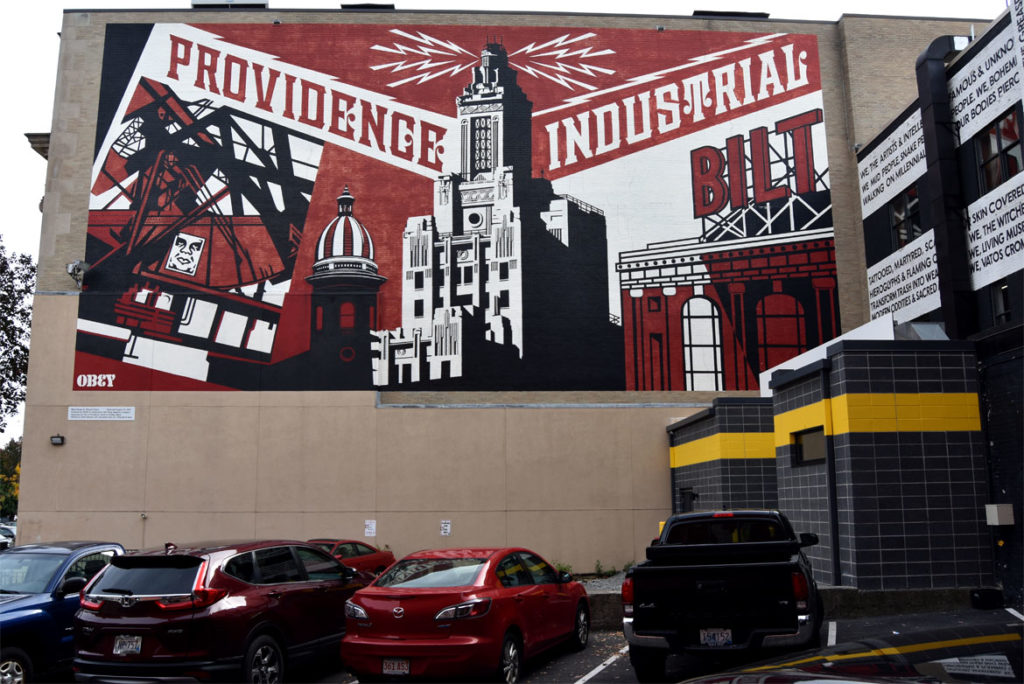
In the decade since, Fairey’s street fashion clothing designs have exploded in popularity and he’s increasingly created officially sanctioned murals around the world—including designing the “Providence Industrial” mural, painted by Johan Bjurman with assistance from E.F. O’Donnell & Sons, behind AS220’s Empire Street complex in 2010. For the 2015, United Nations Climate Change Conference in Paris, he installed a giant sphere mandala between the first and second floors of the Eiffel Tower.
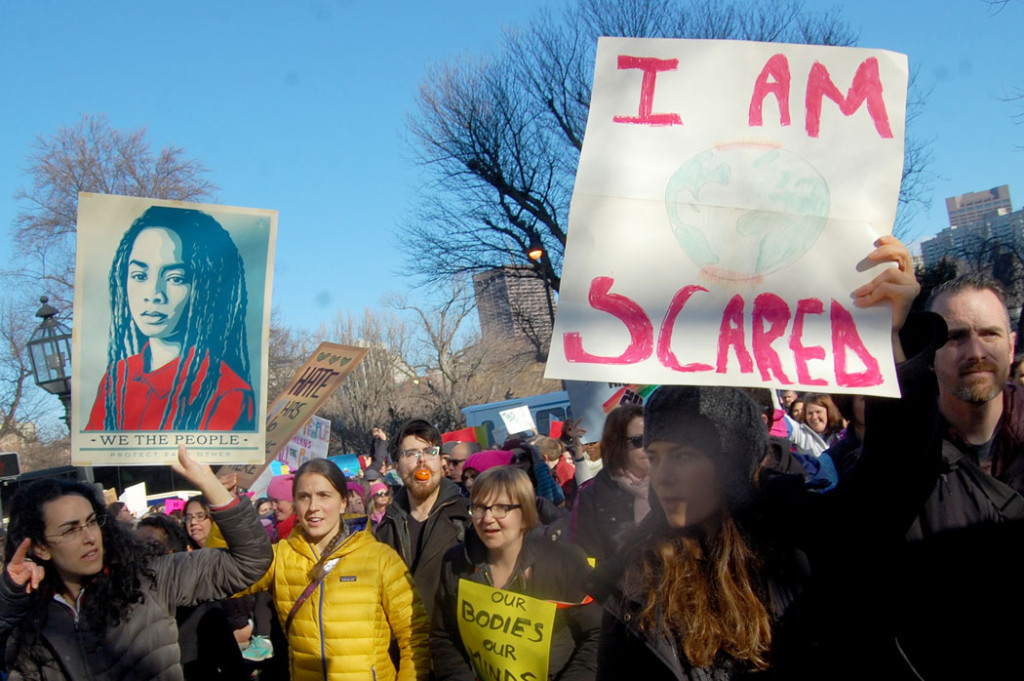
For the Women’s March that coincided with the inauguration of Donald Trump in January 2017, Fairey designed posters of heroic images of diverse women. Widely distributed—published as advertisements in The New York Times, Washington Post and USA Today and nearly 2 million more were freely distributed as posters across the country—they became icons of the protests.
“Trump is an example of using the worst traits of humanity to get ahead,” Fairey says. “…He knows fear, hate and jealousy are strong tools.”
“My response is universal humanity, to portray that universal humanity in a way that is undeniable,” Fairey says. “The dominant [Trump] approach is to stimulate hate and division. … It’s pretty punk rock to try to unite.”
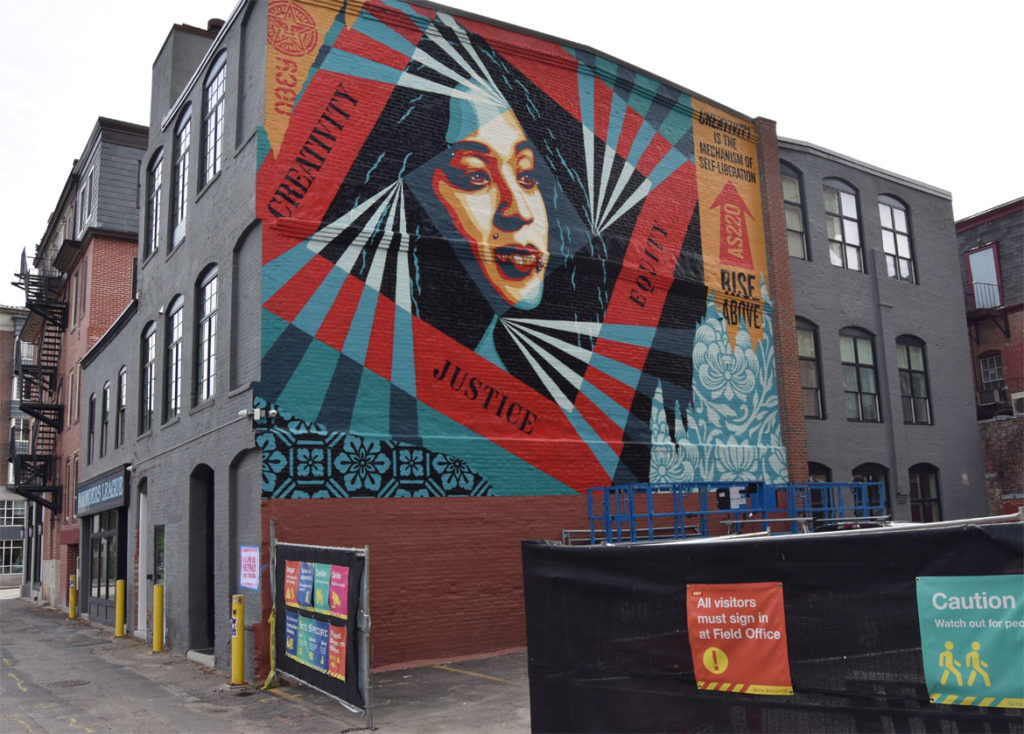
On Monday and Tuesday, in collaboration with AS220, Fairey and his crew painted his 100th mural, on the back of the Founder’s League building at 91 Clemence St. Fairey says he shares the values of AS220: “Art should be accessible, it should be democratic, it should be empowering, it should be for the individual and the community.”
The two-story tall mural depicts Anjel Newmann, an alum of AS220 Youth, who’s now the director of the teen arts program. “Psychedelic geometry” radiates from her portrait, which is surrounded by the words “Creativity, Justice, Equity.” On the right is a quote from Newmann: “Creativity is the mechanism of self-liberation.”
“To me,” Fairey says, “she’s the perfect example of what AS220 is meant to do—bring people into a creative world that gives them a lot of opportunity for expression and empowerment and then they want to feed back into that ecosystem as well.”
If this is the kind of coverage of arts, cultures and activisms you appreciate, please support Wonderland by contributing to Wonderland on Patreon. And sign up for our free, weekly newsletter so that you don’t miss any of our reporting.
